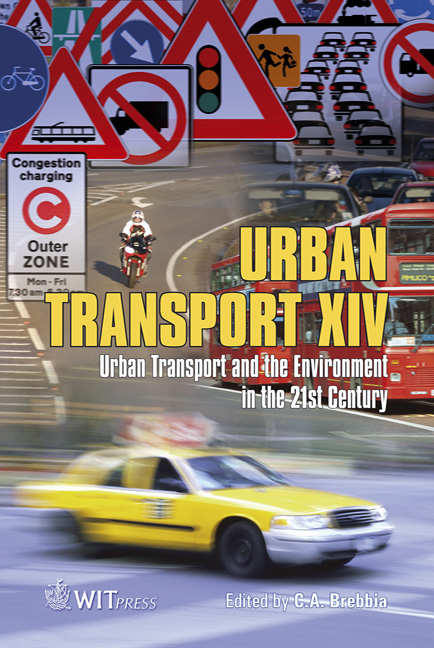Safety Of Users In Road Evacuation: Calibration Of Cost Functions And Simulation
Price
Free (open access)
Transaction
Volume
101
Pages
11
Page Range
715 - 725
Published
2008
Size
340 kb
Paper DOI
10.2495/UT080691
Copyright
WIT Press
Author(s)
A. Vitetta, G. Musolino & F. A. Marcianò
Abstract
Advancements regarding Dynamic Traffic Assignment (DTA) microscopic models for the simulation of supply and demand-supply interaction of a road transportation system in emergency conditions are presented. They are related to link and node models specified in the research project SICURO, carried out by the Laboratory for Transport Systems Analysis (LAST) of the Mediterranea University of Reggio Calabria (Italy). Microscopic link (car-following) and gap-acceptance (rejection) models for non-signalized intersections are calibrated from data observed during a real simulation of evacuation. An application is performed in order to reproduce the observed evacuation phases through a set of performance indicators. Keywords: evacuation, cost functions, microscopic models. 1 Introduction The paper presents advancements regarding Dynamic Traffic Assignment (DTA) microscopic models specified in the research project SICURO carried out by the Laboratory for Transport Systems Analysis (LAST) of the Mediterranea University of Reggio Calabria (Italy). Static assignment models [1] are not able to simulate supply and demandsupply interaction of a road transportation system in emergency conditions when temporary over-saturation of some transportation supply elements, queue formation and dispersion occur. In this context, DTA models and procedures become necessary. They have different specifications: pseudo-dynamic, mesoscopic and microscopic [2–5].
Keywords
evacuation, cost functions, microscopic models.





